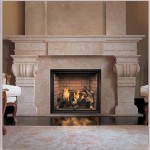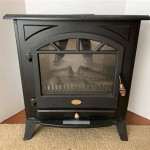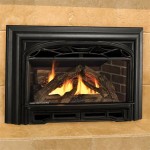See-Through Ventless Fireplaces: An Innovative Heating and Aesthetic Solution
See-through ventless fireplaces represent a modern evolution in home heating and design. These fireplaces, also known as peninsula fireplaces or double-sided fireplaces, offer a unique aesthetic appeal by allowing a view of the flames from two separate rooms or areas. Unlike traditional fireplaces, they don't require a chimney or venting system, which simplifies installation and provides greater flexibility in placement within a home or building.
The absence of a chimney is made possible by the use of fuel types that burn cleanly and efficiently. Most commonly, these fireplaces utilize natural gas, propane, or ethanol. The combustion process is designed to minimize the production of harmful byproducts, ensuring that the indoor air quality remains within acceptable safety standards. This characteristic differentiates them from wood-burning fireplaces, which require extensive venting to remove smoke and other pollutants.
The design of a see-through ventless fireplace typically involves a firebox enclosed by glass on two opposing sides. This glass serves both to contain the flames and to provide a clear view of the fire. The framework surrounding the glass can vary in style, ranging from sleek and modern designs with minimal framing to more traditional styles with ornate detailing. The choice of materials, such as stainless steel, cast iron, or stone, further contributes to the overall aesthetic of the fireplace and allows it to be integrated seamlessly into diverse architectural styles.
Installation Considerations
One of the primary advantages of see-through ventless fireplaces is the ease of installation compared to traditional fireplaces. Because they do not require a chimney, the installation process is significantly less complex and costly. However, this does not mean that installation is entirely straightforward. Careful planning and adherence to manufacturer guidelines are crucial to ensure safe and efficient operation.
First and foremost, it's imperative to consult with local building codes and regulations regarding the installation of ventless fireplaces. Some jurisdictions have specific restrictions on the use of ventless appliances, while others require permits and inspections. Compliance with these regulations is essential to avoid potential legal issues and to ensure the safety of occupants.
The location of the fireplace is another critical consideration. While ventless fireplaces offer greater flexibility in placement, they should still be installed in areas with adequate ventilation. Although they don't require a chimney, they do consume oxygen during combustion. Sufficient airflow is necessary to prevent the buildup of carbon monoxide and other potentially harmful gases. A well-ventilated room is crucial for maintaining air quality and preventing health risks.
Professional installation by a qualified technician is highly recommended. A trained professional can ensure that the fireplace is properly connected to the gas or propane supply, that the venting requirements (if any) are met, and that the appliance is operating safely and efficiently. This can help to prevent costly repairs and ensure the longevity of the fireplace.
Fuel Options and Performance
The choice of fuel significantly impacts the performance and operational costs of a see-through ventless fireplace. Natural gas, propane, and ethanol each offer distinct advantages and disadvantages.
Natural gas is often considered the most economical option, particularly if a natural gas line is already available on the property. It provides a consistent and reliable source of fuel, and the cost per unit of energy is typically lower than that of propane or ethanol. However, the installation of a natural gas line can be expensive if one is not already in place.
Propane is a versatile alternative that can be stored in tanks, making it suitable for homes without access to a natural gas line. While propane is generally more expensive than natural gas, it offers a higher heat output per unit of volume. This can make it an attractive option for heating larger spaces. Regular monitoring of propane tank levels is necessary to ensure a continuous supply of fuel.
Ethanol fireplaces use a liquid fuel derived from renewable sources, making them an environmentally friendly option. Ethanol burns cleanly, producing minimal emissions and requiring no venting. However, ethanol is typically the most expensive fuel option, and the heat output may be lower than that of natural gas or propane fireplaces. Ethanol fireplaces are often chosen for their aesthetic appeal and ease of use, rather than for their heating efficiency.
The heat output of a see-through ventless fireplace is measured in British Thermal Units (BTUs). The appropriate BTU rating for a particular space depends on the size of the room, the insulation levels, and the climate. Consulting with a heating professional can help determine the optimal BTU rating to ensure adequate heating without excessive energy consumption.
Safety and Maintenance
While see-through ventless fireplaces offer convenience and aesthetic appeal, safety should always be the top priority. Regular maintenance is crucial to ensure safe and efficient operation.
Carbon monoxide detectors are essential in homes with ventless fireplaces. These detectors provide an early warning of carbon monoxide buildup, allowing occupants to evacuate the premises. Detectors should be installed near sleeping areas and tested regularly to ensure they are functioning properly. Consider models that include digital readouts for real-time monitoring of carbon monoxide levels.
Regular cleaning of the fireplace is necessary to remove dust, soot, and other debris that can accumulate over time. The glass panels should be cleaned with a non-abrasive cleaner to maintain visibility and prevent streaking. The burner assembly should be inspected periodically for signs of damage or wear. Follow the manufacturer's instructions for cleaning and maintenance procedures.
Professional servicing by a qualified technician is recommended at least once a year. A technician can inspect the fireplace for potential problems, such as gas leaks or malfunctioning components. They can also perform necessary repairs and adjustments to ensure that the fireplace is operating safely and efficiently. This preventative maintenance can extend the lifespan of the fireplace and prevent costly repairs in the future.

Building Gas Fireplace Residential Outdoor 38 Modern Ventless See Through Divine Series Hl38svo 102e838 Arcat

Monessen Lo Rider See Thru Vent Free Gas Firebox Lstf36 B North Country Fire

White Mountain Hearth By Empire Ventless Outdoor See Through Gas Fireplace 60

Boulevard See Through 60 Inch Vent Free Linear Fireplace Fine S Gas

Designer Lo Rider See Thru Vent Free Firebox Stacked Liner Monessen

Rushmore 40 Inch See Through Direct Vent Fireplace Fine S Gas

36 Echelon Ii Intellifire Touch See Thru Direct Vent Linear Fireplace Electronic Ignition Majestic

Pin On Kitchen

Direct Vent 43 Superior Linear Venice Lights Fireplace Drl4543 Ihp Fmi Vldv43

18 Evening Embers See Thru Ventless Gas Fireplace Logs
Related Posts








